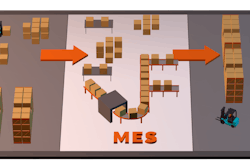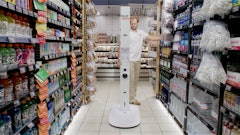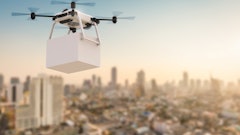
Mitigating the transmission of the Coronavirus disease (COVID-19) over the last year has come at an enormous expense to food retailers. According to the Food Marketing Institute’s (FMI) report on pandemic spending among grocers, the industry spent an estimated $3 billion on cleaning, sanitation supplies, labor and other related expenses and $1.5 billion on technology fighting the novel Coronavirus.
As a result of these vital and unavoidable investments, autonomous mobile robot (AMR) vendors, including those powering robots for use in e-commerce fulfillment, factories and warehousing and retail operations, have been experiencing quite a boom. The market for automated robots grew by a staggering 27% last year. The spike in deploying their technologies has added to the already strong growth trajectory robotics developers were experiencing before COVID-19. In fact, combined revenues from mobile robot startups reached nearly $500 million in 2019, a five–fold increase since 2017 that equates to a market share of 25%.
The reasons for the increasing popularity of AMRs among retailers, specifically food retailers, are easy to understand -- the technology is advanced enough to be applicable to a wide range of in-store functions. In turn, this improves the cost and efficiency of product handling, while also boosting the quality of life and increasing safety of the workforce in these essential public spaces.
A look to the future of retail technology
With COVID-19 ravaging so many businesses in 2020, there are strong indications the widespread use of AMRs in brick-and-mortar grocery stores and other retail sectors will continue even post-pandemic. As the country pushes vaccinations ever more broadly and as businesses move to re-open without social distancing and mask requirements, the continued use of robotic technology will help companies become more resilient to future, similar catastrophes by being less reliant on human labor in a job market that may require many to stay at home and remain socially distant.
When it comes to maintaining cleaning and sanitizing standards, retailers indicate an ongoing commitment to practicing pandemic-era protocols. In a recent Brain Corp survey conducted with RetailWire, more than one-third (36%) of retailer participants say they expect “no end in sight” when asked how long they anticipate incurring the cost of heightened cleaning to meet consumer expectations, while 53% anticipate doing so for another 6-18 months. On the other end of the spectrum, nearly 10% will maintain increased cleaning standards for between 18 months and three years. On the low end, 3% expect it to dissipate within just six months, a timeframe that’s impossible to imagine for many.
While AMRs first entered the world to support cleaning operations, they have increasingly taken on other equally important functions. In addition to autonomous floor scrubbers, there are now self-driving vacuums, inventory tugs and shelf scanners. Additionally, there are multifunctional AMRs that have become increasingly popular for front-of-house operations because on top of their core competency, they also provide valuable in-store insights like the ability to capture real-time data on products and customer buying patterns, monitor pricing and planogram compliance and keep tabs on out-of-stock items. With powerful data at their fingertips, retailers will be able to measure cleanliness and increase store productivity, which is why 77% of national retailers say it is important to create a clear robotics strategy compared to just 30% for regional retailers.
These new expanded capabilities indicate the future adoption of AMRs is likely to skyrocket. Add to this the net positive impacts COVID-19 had in driving e-commerce and automation, it’s not surprising industry analysts are predicting this growth spurt to continue at a double-digit pace over the next five years. And, investors are paying attention.
To date, $2 billion have been invested in mobile robot companies since the start of 2015. Despite this impressive number, the market is still massively underpenetrated, with record-levels of investments still just scratching the surface. Experts report that AMR usage in warehouses around the world today is less than 1% and predict that it will barely surpass 5% in the next five years.
Why AMRs are just getting started
The rise of AMRs has been decades in the making, but the pandemic accelerated their adoption and made the path forward even clearer for businesses across sectors. One thing is certain -- AMRs have been carrying significant momentum throughout the pandemic and are here to stay.
Click here to hear more about robotics in the supply chain:

















![Top Tech Startup Logo 2025 Vertical [color] (1)](https://img.foodlogistics.com/mindful/acbm/workspaces/default/uploads/2025/07/top-tech-startup-logo-2025-vertical-color-1.pZkBK95TLe.png?ar=16%3A9&auto=format%2Ccompress&bg=fff&fill-color=fff&fit=fill&h=135&q=70&w=240)

